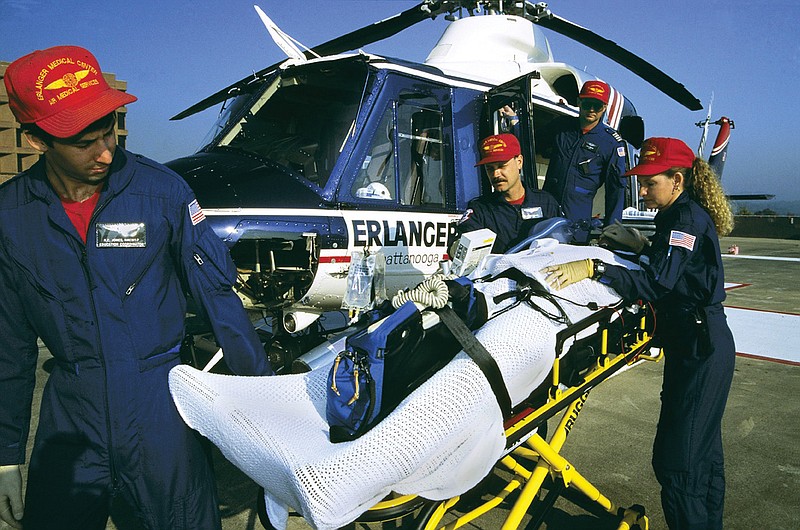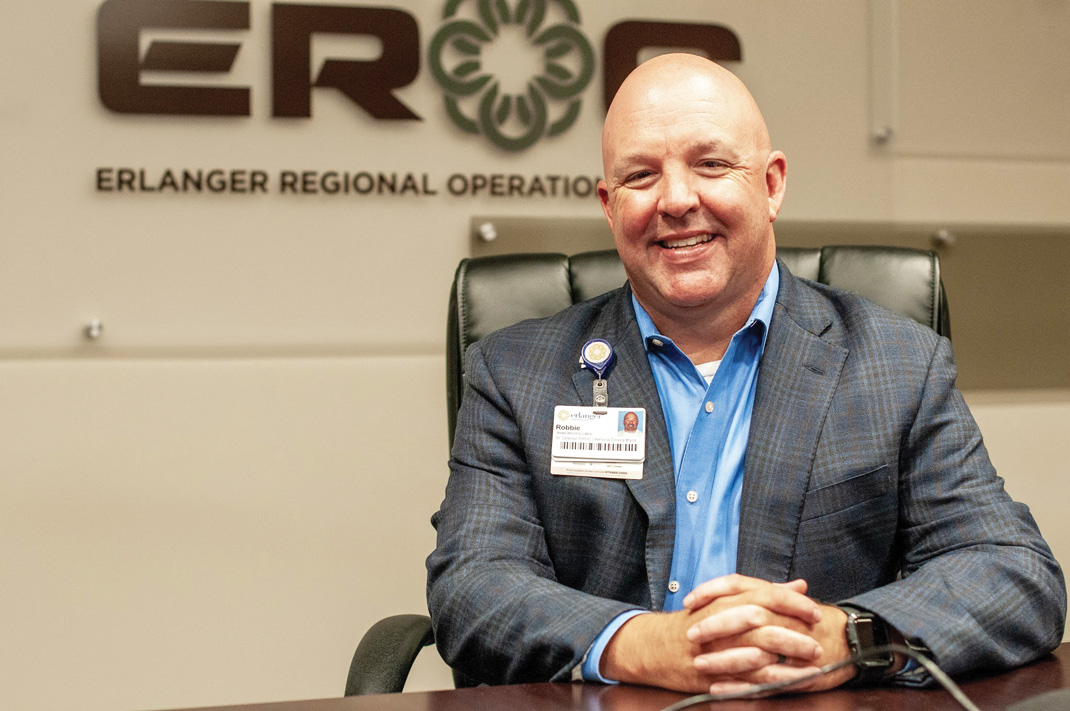It's been a solid 12 years since Robbie Tester, then a clinician, took on his last mission with Erlanger Life Force. But the memories of those flights are still fresh in his mind.
"One time we flew into Georgia," he recalls. "A kid had been hurt on an ATV. He needed a chest tube and several other measures to stabilize. It was something small, rural hospitals don't see that often.
"We brought him back (here), and he made a full recovery, but he probably wouldn't have survived a two-hour (ground) ambulance ride."
Tester flew on Life Force from 1998 to 2012 before moving into an administrative role. As Erlanger's vice president for patient logistics, he was at the heart of the celebration when Life Force celebrated its 35th anniversary last December.
"The program went into service Dec. 17, 1988," he says, "and we flew our first patient on the 19th -- a pediatric patient in Sewanee with a respiratory problem."
Tester says Erlanger's leaders were looking in 1986 at the prospect of starting a regional critical-care transport program. They were leaning toward ground transport, Tester says, until they saw the helicopter program launched by the University of Tennessee's hospital in Knoxville.
"At some point in 1987," he says, "they changed direction. They determined helicopter-based service would be more appropriate for the communities Erlanger served."
Tester says Life Force started with a single, used helicopter, for which Erlanger paid $2.2 million. He says the one-time military craft was completely refitted and reconfigured for medical use.
"A new helicopter, similar to what we fly today, is about $8 million," Tester says, adding that each craft in the current fleet is equipped with, among other things, blood analyzers, on-board imaging equipment and all the hardware necessary for medical personnel to perform procedures such as tracheotomies and insertions of chest tubes.
Tester says Erlanger owned and operated the Life Force program until 2008, when it partnered with Med Trans. For the past 16 years, he says, Med Trans has owned and provided the helicopters, pilots and mechanics for Life Force, while all medical and communications personnel are affiliated with the hospital.
Tester says Life Force gets about 5,000 calls for help each year. Those calls come from doctors on the scene or 911 dispatchers. And about 60%, an average of eight per day, result in flights.
He adds that Life Force aircraft haven't taken off from Erlanger's downtown Chattanooga campus since 2014. The six choppers now in service are based in Cleveland, Sparta and Winchester, Tennessee; Calhoun and McCaysville, Georgia; and Andrews, North Carolina.
Crews attached to the helicopters work in extended shifts, in a manner similar to that of fire fighters.
"We cover 63 counties and an area of about 50,000 square miles," says Tester, adding that Bristol, Tennessee/Virginia is, to his recollection, the longest one-way flight a Life Force helicopter has made.
"I would say (Life Force) is Erlanger's No. 1 source of outreach," he says. "If we didn't have Life Force, or something like it, large portions of patients might have to go Nashville, Knoxville or Atlanta if (those cities) are closer by ground than air."
READ MORE

